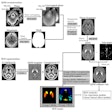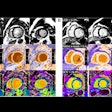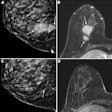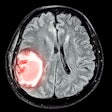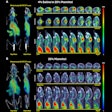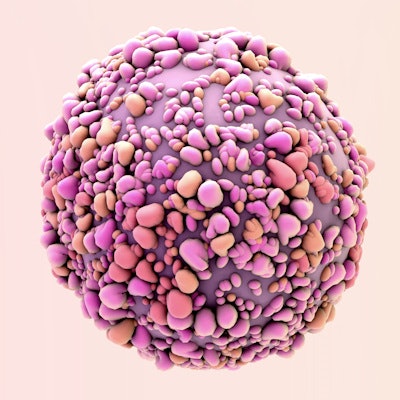
Certain features on dynamic contrast-enhanced (DCE) MRI scans analyzed by computer-aided detection (CAD) software may indicate a worse prognosis for women with invasive breast cancer, according to a study published online on March 31 in Radiology.
CAD findings that could be a sign of a worse prognosis include higher peak gadolinium enhancement and degree of washout on preoperative MRI. The study findings could help clinicians better tailor breast cancer treatment, according to a team led by Dr. Jin You Kim of Pusan National University Hospital in Seo-gu, Busan, South Korea.
"Preoperative MRI features have been suggested as prognostic imaging markers that can be used to predict outcomes," the group wrote.
Studies have shown a connection between CAD-identified kinetic features of breast cancer on preoperative MRI and survival outcomes, with higher peak enhancement values and washout associated with worse ones. But research hasn't focused on whether these breast MRI features are also predictive of outcomes in distant metastases, according to the authors.
"To our knowledge, there have been no studies of associations between CAD-extracted kinetic features and distant metastasis outcomes in women with breast cancer," they wrote.
Kim and colleagues conducted a study that included 276 women with newly diagnosed breast cancer who underwent preoperative MRI between 2011 and 2012. Of these, 28 (10.1%) had distant metastases that were followed for a median of 25 months. The researchers used CAD software to formulate peak enhancement and delayed enhancement profiles of each of the cases.
Women with distant metastases had higher degrees of kinetic heterogeneity (the rate of gadolinium enhancement and degree of washout) at breast MRI than those without (mean, 0.70 compared with 0.43, p < 0.001). The team found that the following characteristics in women with distant metastases translated to worse prognosis:
| Characteristics associated with worse prognosis in women with distant metastases from breast cancer | ||
| Variable | Women without distant metastases | Women with distant metastases |
| Axillary node metastasis | 36.3% | 64.3% |
| Histologic grade (3 or higher) | 32.3% | 64.3% |
| Lymphovascular invasion | 31.5% | 67.9% |
| Mean peak enhancement value | 237.9% | 423.2% |
| Washout component | 12.4% | 12.7% |
"We found significant differences in early peak enhancement and delayed enhancement profiles, as determined with CAD of preoperative breast MRI, between the distant and nondistant metastasis groups," the team wrote. "We also noted a higher degree of kinetic heterogeneity in the distant metastasis group."
The results could lead to more tailored treatment in women with invasive breast cancer, according to an editorial by Dr. Riham El Khouli, PhD, of the University of Kentucky in Lexington, and Michael Jacobs, PhD, of Johns Hopkins University in Baltimore, that accompanied the study.
"This study fits perfectly with the personalized medicine concept of tailoring management according to the individual patient and tumor characteristics rather than using a one-solution-fits-all approach, especially in a subgroup requiring more aggressive treatment, more frequent imaging, or both," El Khouli and Jacobs wrote.




.fFmgij6Hin.png?auto=compress%2Cformat&fit=crop&h=100&q=70&w=100)


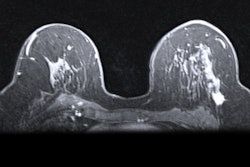

.fFmgij6Hin.png?auto=compress%2Cformat&fit=crop&h=167&q=70&w=250)





